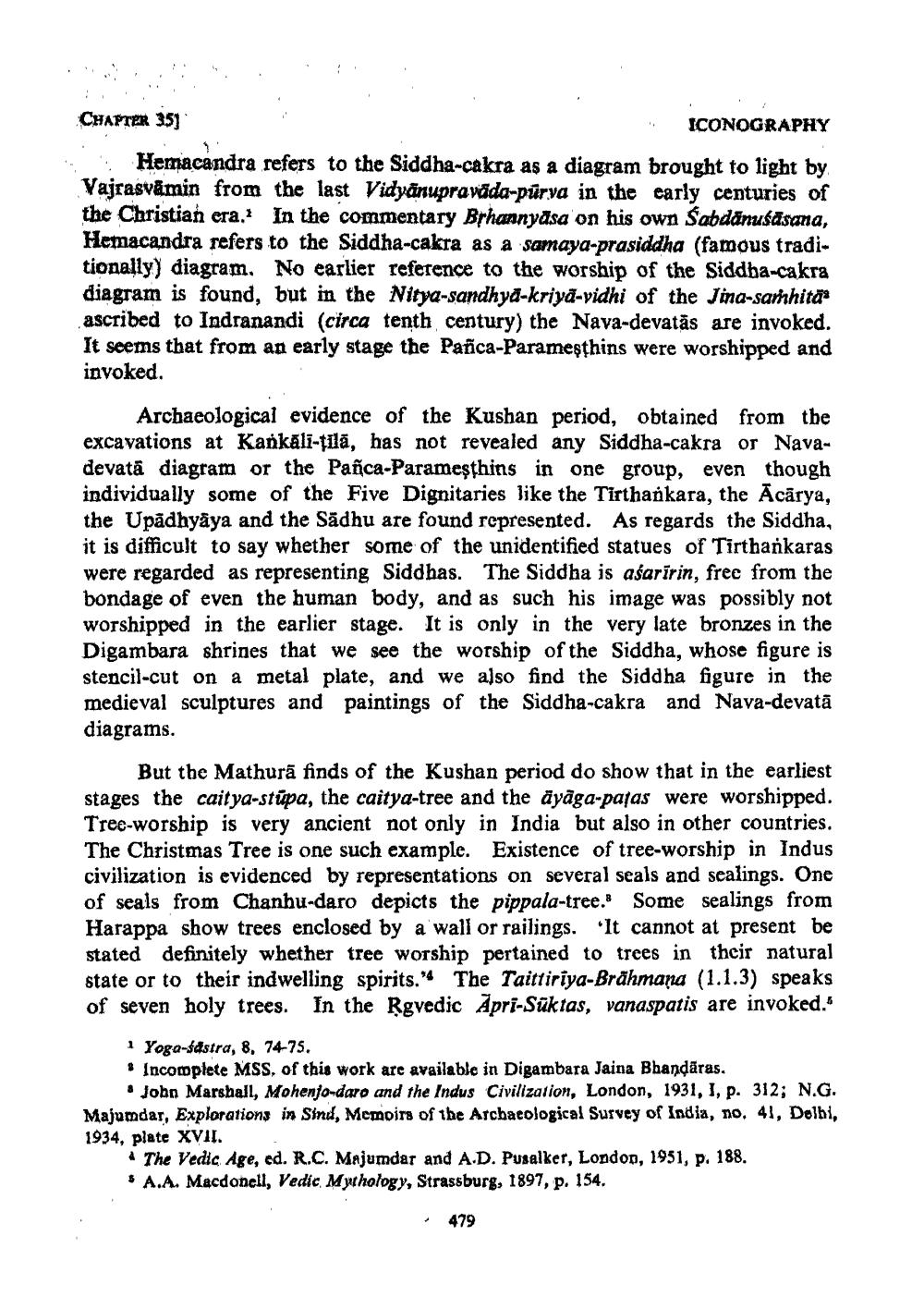________________
CHAPTER 35)
ICONOGRAPHY Hemacandra refers to the Siddha-cakra as a diagram brought to light by Vajrasvamin from the last Vidyānupravdda-pūrva in the early centuries of the Christian era. In the commentary Brhannyåsa on his own Sabdanusasana, Hemacandra refers to the Siddha-cakra as a samaya-prasiddha (famous traditionally) diagram. No earlier reference to the worship of the Siddha-cakra diagram is found, but in the Nitya-sandhya-kriya-vidhi of the Jina-sarhhita* ascribed to Indranandi (circa tenth century) the Nava-devatās are invoked. It seems that from an early stage the Pañca-Parameşthins were worshipped and invoked.
Archaeological evidence of the Kushan period, obtained from the excavations at Kankālī-tilā, has not revealed any Siddha-cakra or Navadevată diagram or the Panca-Parameşthins in one group, even though individually some of the Five Dignitaries like the Tirthankara, the Ācārya, the Upadhyâya and the Sädhu are found represented. As regards the Siddha, it is difficult to say whether some of the unidentified statues of Tirthankaras were regarded as representing Siddhas. The Siddha is aśarīrin, free from the bondage of even the human body, and as such his image was possibly not worshipped in the earlier stage. It is only in the very late bronzes in the Digambara shrines that we see the worship of the Siddha, whose figure is stencil-cut on a metal plate, and we also find the Siddha figure in the medieval sculptures and paintings of the Siddha-cakra and Nava-devatā diagrams.
But the Mathurā finds of the Kushan period do show that in the earliest stages the caitya-stúpa, the caitya-tree and the āyāga-pajas were worshipped. Tree-worship is very ancient not only in India but also in other countries. The Christmas Tree is one such example. Existence of tree-worship in Indus civilization is evidenced by representations on several seals and sealings. One of seals from Chanhu-daro depicts the pippala-tree. Some sealings from Harappa show trees enclosed by a wall or railings. "It cannot at present be stated definitely whether tree worship pertained to trees in their natural state or to their indwelling spirits. *4 The Taittiriya-Brāhmana (1.1.3) speaks of seven holy trees. In the Rgvedic Apri-Süktas, vanaspatis are invoked."
1 Yoga-fastra, 8, 74-75. * Incomplete MSS, of this work are available in Digambara Jaina Bhandāras.
• John Marshall, Mohenjo-daro and the Indus Civilization, London, 1931, 1, p. 312; N.G. Majumdar, Explorations in Sind, Memoirs of the Archaeological Survey of India, no. 41, Delhi, 1934, plate XVII.
* The Vedic Age, ed. R.C. Majumdar and A.D. Pusalker, London, 1951, p. 188. * A.A. Macdonell, Vedic Mythology, Strassburg, 1897, p. 154.
479




